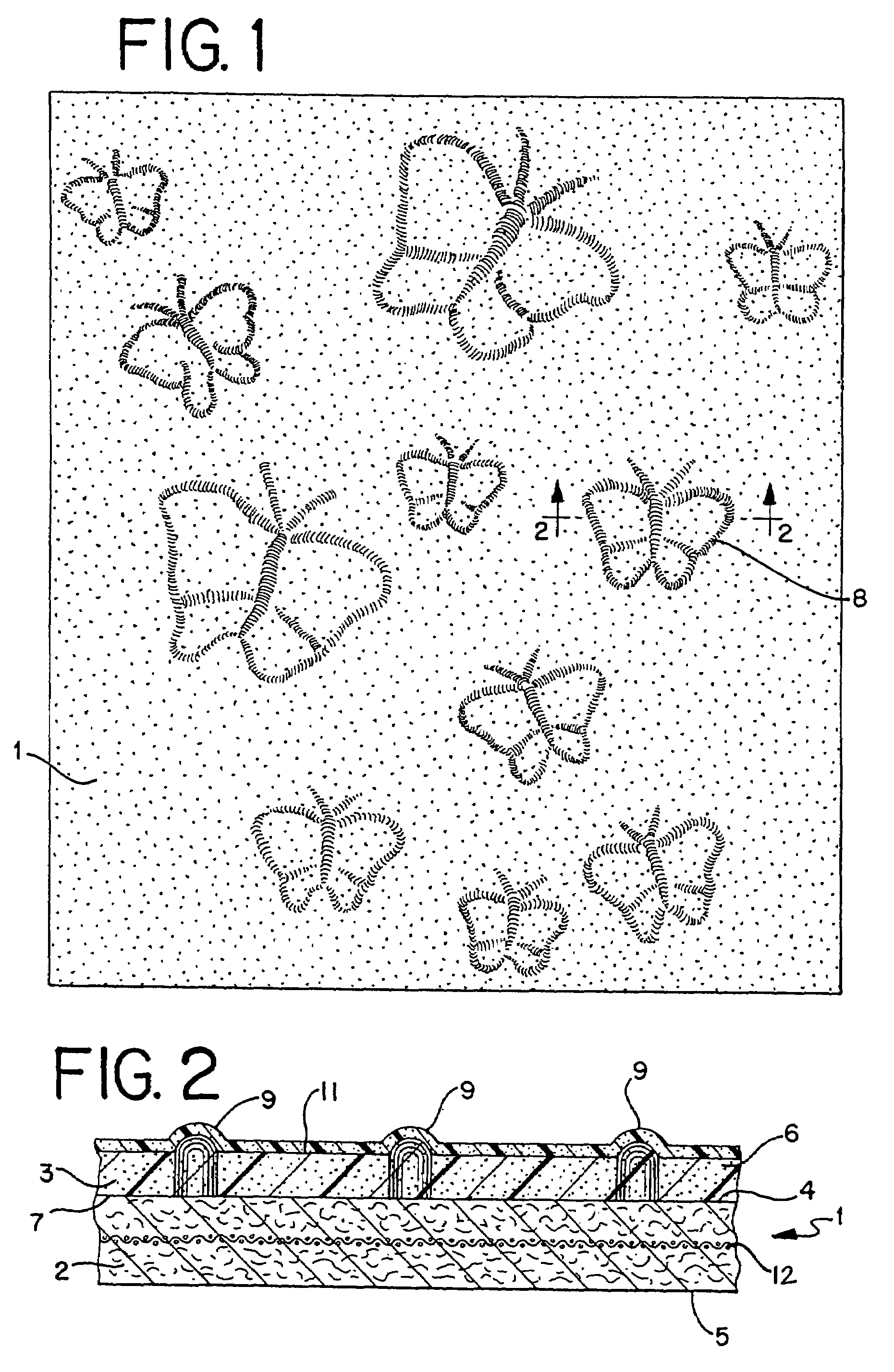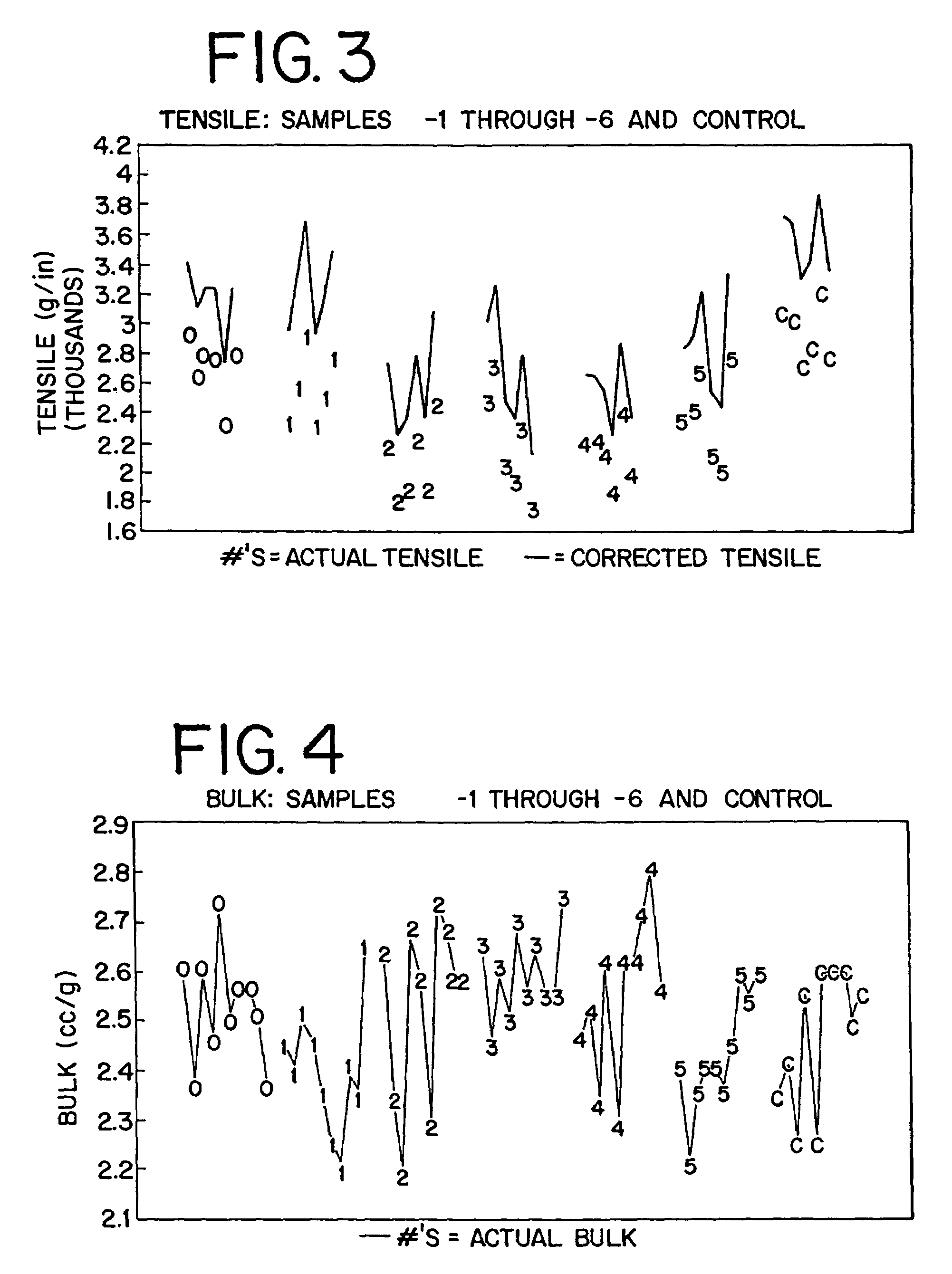Method of making a tissue basesheet
a tissue base and felting technology, applied in the field of papermaking felts, can solve the problems of not controlling the place of liquid precursors, reducing the bulk and absorbency of tissue sheets, and reducing the consistency of sheets, so as to increase bulk and visual aesthetics, increase nip pressure, and reduce the effect of sheet consistency
- Summary
- Abstract
- Description
- Claims
- Application Information
AI Technical Summary
Benefits of technology
Problems solved by technology
Method used
Image
Examples
Embodiment Construction
[0019]In accordance with the invention, as shown in FIGS. 1 and 2, the felt 1 comprises a substrate layer 2 having a flat carrier layer 3 adhered or joined thereto. A pattern or design 8 is stitched into the carrier layer 3. The substrate layer has a first surface 4 and a second surface 5 opposite the first surface 4. The patterned carrier has a first face 6 which contacts the tissue web and a second face 7 which contacts the first surface 4 of the substrate layer 2. The carrier layer is preferably a non-woven material, such as a spunbond material, and has a raised pattern 8 stitched thereon. By “raised” it is meant having a plurality of projections 9 which are stitched into the web-contacting surface of the carrier. The stitching is such that the stitched pattern allows water to flow through the stitched elements into the water holding substrate. Also, the stitching material is compressible. As shown in FIG. 2, the height of the preferred stitched elements is at least 10% of the co...
PUM
| Property | Measurement | Unit |
|---|---|---|
| height | aaaaa | aaaaa |
| thickness | aaaaa | aaaaa |
| hydrophobic | aaaaa | aaaaa |
Abstract
Description
Claims
Application Information
 Login to View More
Login to View More - R&D
- Intellectual Property
- Life Sciences
- Materials
- Tech Scout
- Unparalleled Data Quality
- Higher Quality Content
- 60% Fewer Hallucinations
Browse by: Latest US Patents, China's latest patents, Technical Efficacy Thesaurus, Application Domain, Technology Topic, Popular Technical Reports.
© 2025 PatSnap. All rights reserved.Legal|Privacy policy|Modern Slavery Act Transparency Statement|Sitemap|About US| Contact US: help@patsnap.com



